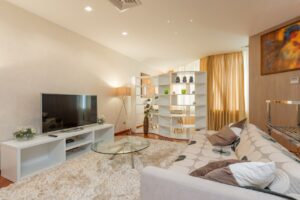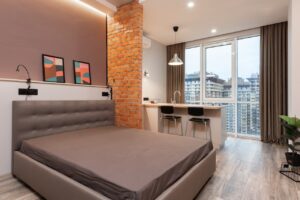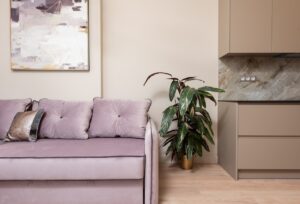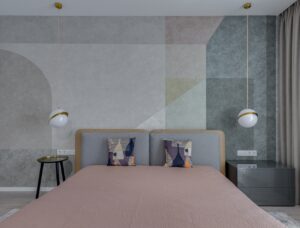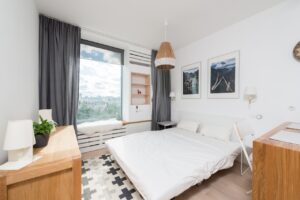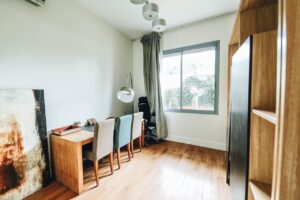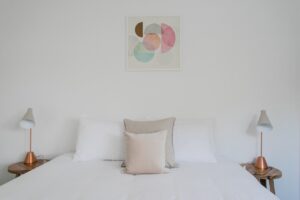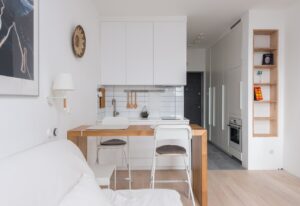
Choosing the Right Exterior Paint Color for Your Home
Choosing the Right Exterior Paint Color for Your Home Selecting the perfect exterior paint color for your home can be a daunting task. The color you choose not only reflects your personal style but also impacts the overall aesthetic of your neighborhood. With countless options available, it’s essential to consider various factors to ensure your choice enhances your home’s curb appeal and complements its architectural features. Here’s a guide to help you navigate the process of choosing the right exterior paint color. 1. Understand Your Home’s Architecture The architectural style of your home plays a significant role in determining the best paint color. Different styles lend themselves to specific color palettes: Traditional Homes: Classic colors like soft whites, creams, and muted pastels work well. Rich, deep colors like navy blue or forest green can also add elegance. Modern Homes: Bold, vibrant colors or sleek neutrals like gray and black can enhance the clean lines and minimalist design. Victorian Homes: These homes often benefit from a combination of colors, allowing for intricate detailing. Consider using a base color with contrasting trim to highlight architectural features. Cottage or Bungalow Styles: Earthy tones and soft hues can create a warm, inviting look that complements the cozy feel of these homes. 2. Consider the Neighborhood Before settling on a color, take a stroll through your neighborhood. Observe the colors of nearby homes and consider how your choice will fit into the overall landscape. While you want your home to stand out, it’s also important to maintain harmony with the surrounding properties. If your neighborhood has a specific color trend, you might want to choose a shade that aligns with it while still reflecting your personal style. 3. Test Samples Once you have a few colors in mind, it’s crucial to test them on your home. Purchase sample pots of your chosen colors and apply them to a small section of your exterior. Observe how the colors look at different times of the day, as natural light can significantly alter their appearance. This step will help you visualize how the color will look on your entire home and ensure you’re happy with your choice. 4. Factor in the Climate The climate in your area can influence your color choice. In warmer climates, lighter colors can help keep your home cooler by reflecting sunlight. Conversely, darker colors may absorb heat, making them less suitable for hot regions. In cooler climates, darker shades can add warmth and coziness. Additionally, consider how the color will hold up against the elements; some colors may fade faster than others due to sun exposure and weather conditions. 5. Think About Trim and Accents Don’t forget to consider the trim, doors, and other architectural details when choosing your exterior paint color. A well-coordinated color scheme can elevate your home’s appearance. For example, if you choose a bold color for the main body of your house, consider using a neutral or complementary color for the trim to create balance. Accent colors can also be used for doors or shutters to add a pop of personality. 6. Embrace Trends, but Stay Timeless While it can be tempting to choose trendy colors, it’s essential to consider the longevity of your choice. Trends come and go, and you want your home to look good for years to come. Opt for classic colors that have stood the test of time, and use trendy shades as accents rather than the main color. This approach allows you to keep your home looking fresh without committing to a color that may quickly fall out of favor. 7. Seek Professional Advice If you’re still unsure about your color choice, consider consulting with a professional color consultant or an interior designer. They can provide valuable insights and help you create a cohesive color scheme that enhances your home’s beauty. Additionally, many paint stores offer color consultation services, allowing you to explore options with expert guidance. Conclusion Choosing the right exterior paint color for your home is a significant decision that requires careful consideration. By understanding your home’s architecture, observing your neighborhood, testing samples, and factoring in climate and trends, you can make an informed choice that enhances your home’s curb appeal. Remember, the right color can transform your home, making it a true reflection of your style and personality. Happy painting! Need an Expert to Help You Find the Right Color? Let our color expert help you find the best color for your home. Call Paintmasters at 925-370-8089 for a free estimate and color consultation.

